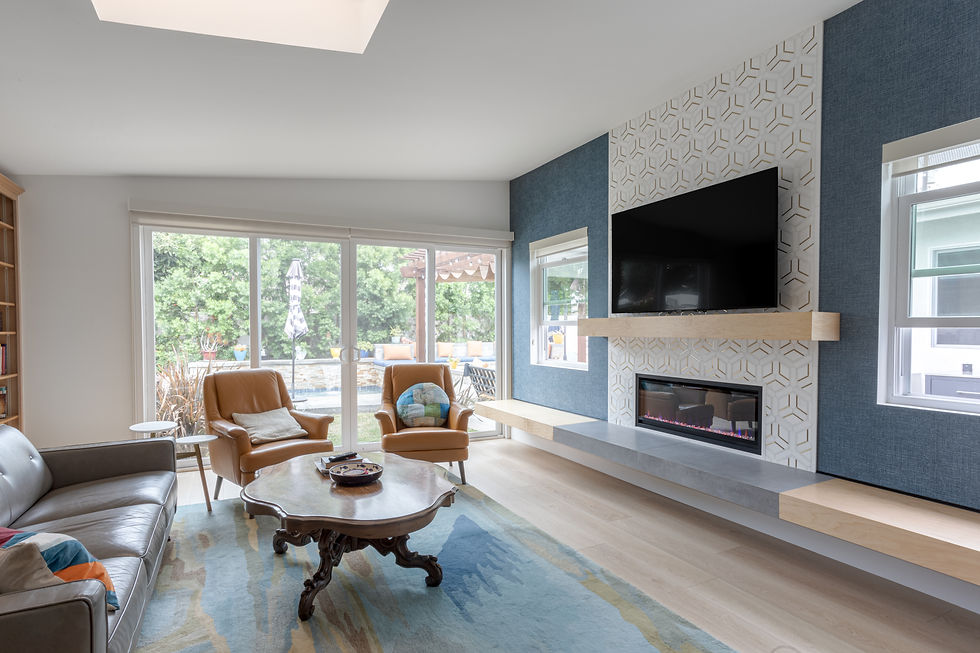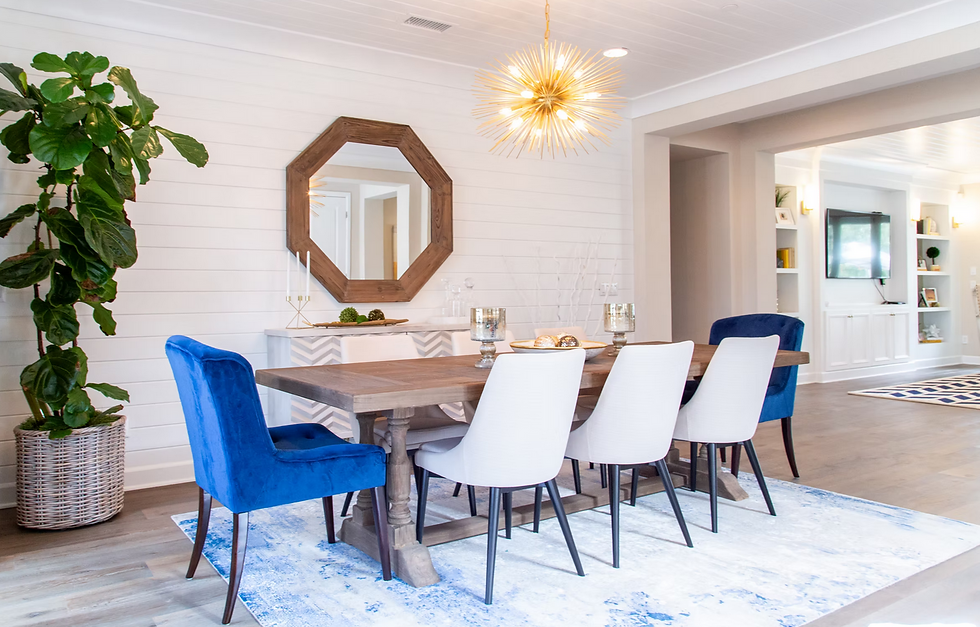Demystifying Modern and Contemporary Design: Unveiling the Differences
- Vision Interiors
- Aug 24, 2023
- 2 min read

In the realm of interior design, the terms "modern" and "contemporary" are often used interchangeably, causing confusion among homeowners and enthusiasts alike. However, these design styles carry distinct characteristics and philosophies that set them apart.
In this article, we'll unravel the nuanced differences between modern and contemporary design, helping you navigate the world of interior aesthetics with clarity and confidence.
Modern Design: A Glimpse into Timelessness
Origin and Timeframe: Modern design emerged during the mid-20th century, encompassing the period from the 1920s to the 1950s. It's characterized by clean lines, minimalistic elements, and a focus on functionality.
Materials and Textures: Modern design often features materials like glass, steel, and concrete. Natural textures such as wood and leather provide warmth amidst the starkness.
Form Follows Function: Central to modern design is the principle of "form follows function." Furniture pieces are designed to be practical while maintaining an understated elegance.
Contemporary Design: A Reflection of the Now
Ever-Evolving Style: Contemporary design is more fluid and adaptable. It reflects the current design trends of the present time, which can vary from year to year.
Eclectic Elements: Contemporary spaces often integrate a mix of materials, textures, and styles. There's a sense of creativity and willingness to blend different aesthetics.
Incorporating Technology: Given the contemporary era's technological advancements, this design style may include smart home features and sleek, high-tech materials.
Navigating the Grey Areas
Overlapping Features: Modern and contemporary design can share certain attributes, such as neutral color palettes and open spaces. This can sometimes lead to confusion between the two.
Personalization Matters: While both styles have their distinct traits, homeowners have the flexibility to infuse personal preferences and elements into either design, allowing for a unique fusion of modern and contemporary.
When to Choose Each Style
Opt for Modern When: If you appreciate a clean, timeless aesthetic with a touch of mid-century charm, modern design might be your preference. It's a style that resonates with those who admire simplicity and functionality.
Choose Contemporary When: If you're drawn to staying current with design trends and enjoy experimenting with diverse textures and styles, contemporary design might suit your taste. It's perfect for those who love a more eclectic and adaptable space.
Conclusion
Distinguishing between modern and contemporary design goes beyond mere semantics; it's about understanding the ideologies and characteristics that define each style. While modern design captures the essence of a specific era with its sleek lines and functional appeal, contemporary design is a reflection of the ever-changing present, embracing versatility and innovation.
As you embark on your interior design journey, remember that these styles offer you the creative freedom to craft spaces that resonate with your individuality. By appreciating the differences and nuances, you can curate a home that not only exudes aesthetic excellence but also mirrors your personal design philosophy.




Comments